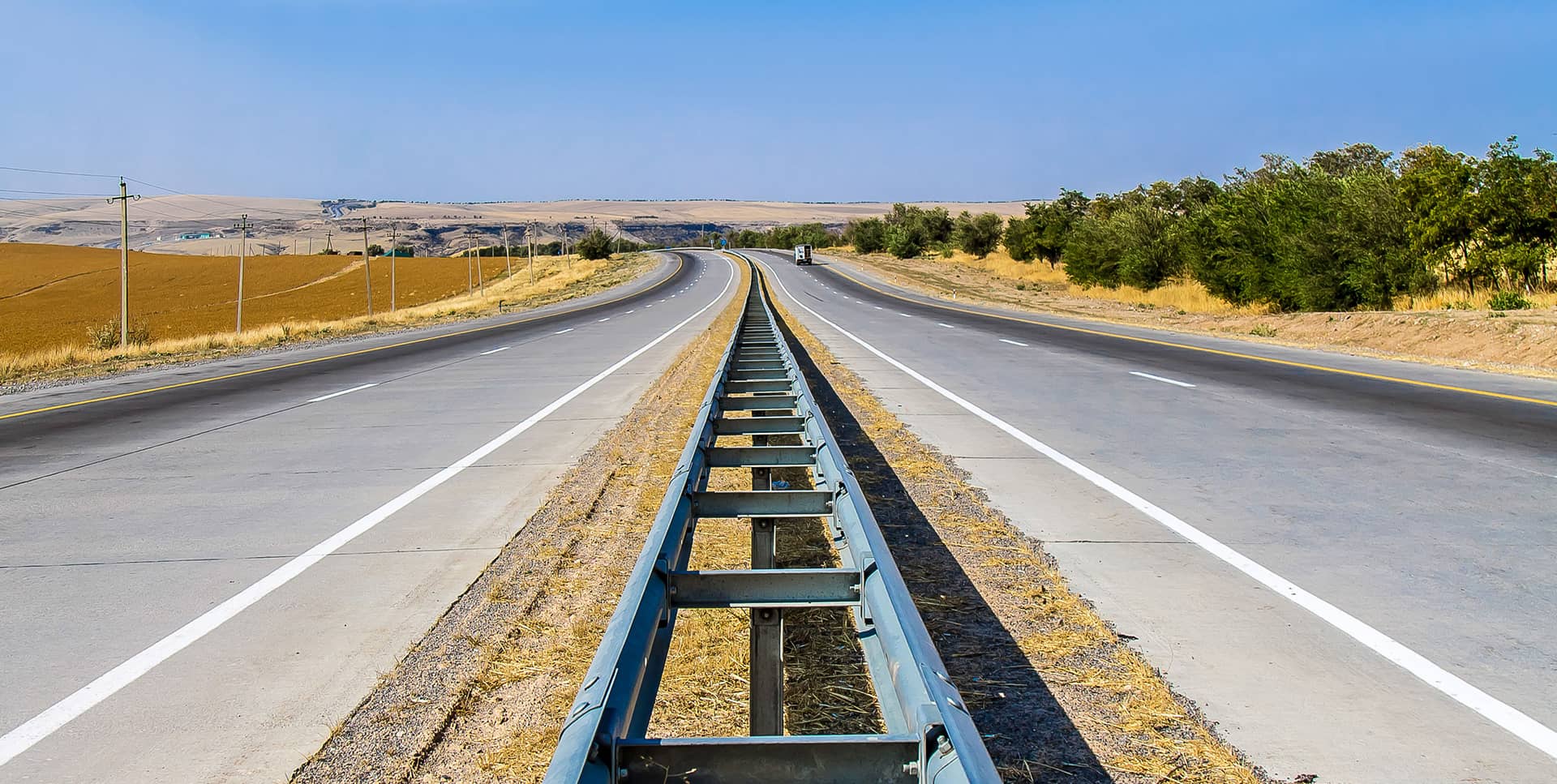Road Safety Crash Barriers
Road safety crash barriers are designed to prevent vehicles from crossing from one carriageway to the other and to prevent vehicles from impacting or entering roadside hazards.
The barriers are also intended to absorb some of the energy from the impact caused by the vehicle striking it and to redirect the vehicle along the line of the barrier so that it does not turn around, turn over or re-enter the stream of traffic. This is called containment.
Barriers are used to protect road users where there is an identified risk and where their use can be justified, both in cost and safety benefit terms. Safety barriers are only used where the consequences of a vehicle striking a barrier are considered likely to be less serious than if the vehicle were to continue unrestrained.
Performance of road safety crash barriers
The performance of a crash barrier is made up of two main things: the containment level and the working width of the barrier.

The working width is the width of the crash barrier plus the amount of deflection that occurs when the barrier is impacted. Safety barriers are tested to European Standard EN1317, which is a standardised performance test. A barrier designed for normal containment would be tested with a vehicle of 1.5tons (an average car) hitting the barrier at an angle of 20 degrees at a speed of 70mph. High containment barriers would be tested with a heavy commercial vehicle, up to 38 tons, travelling at 40mph, hitting the barrier at an angle of 20 degrees.
